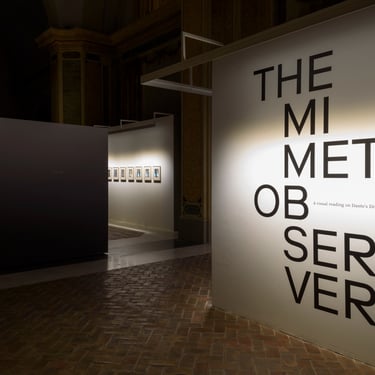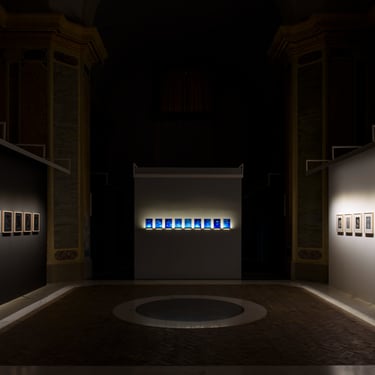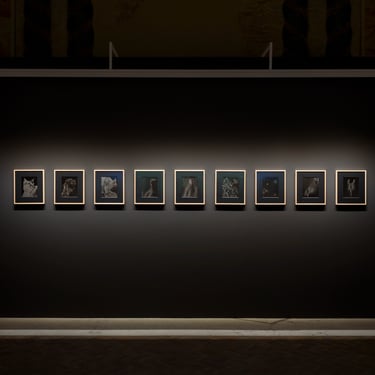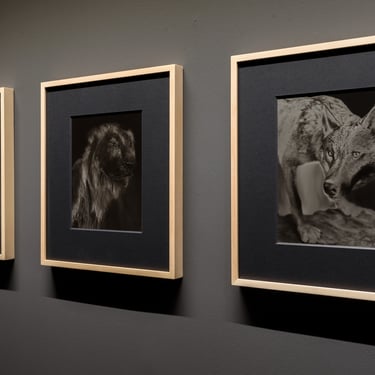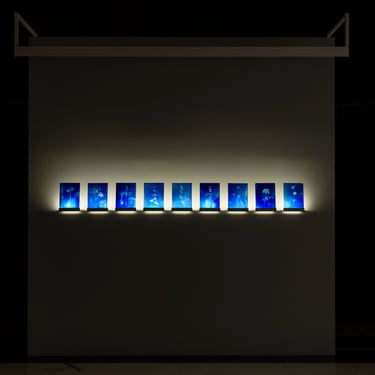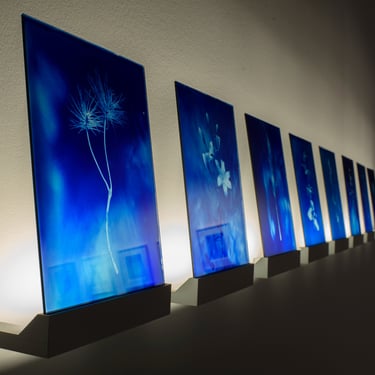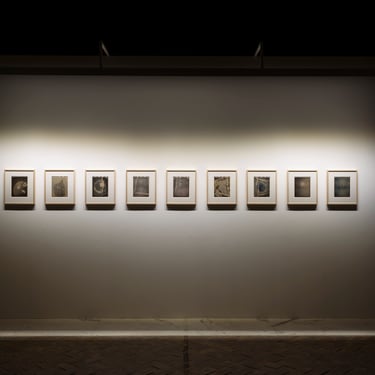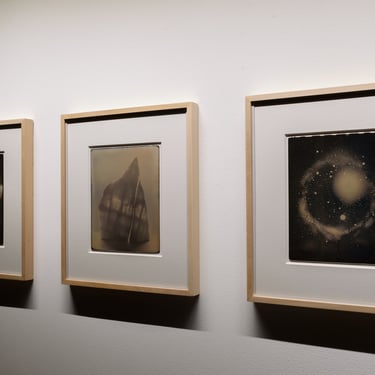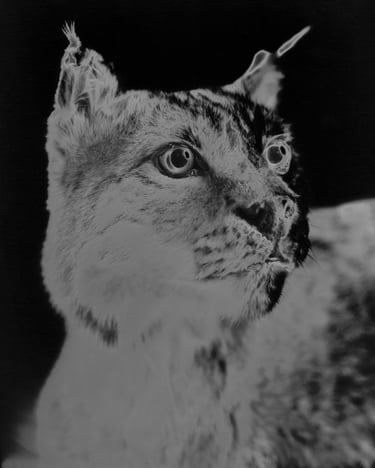
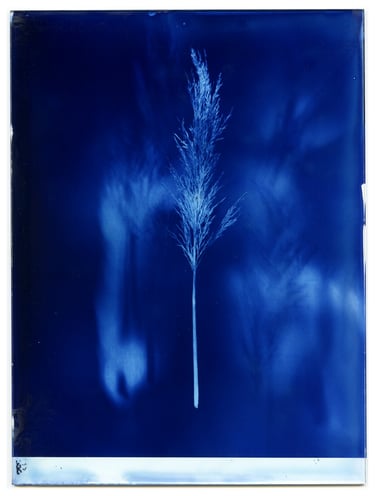
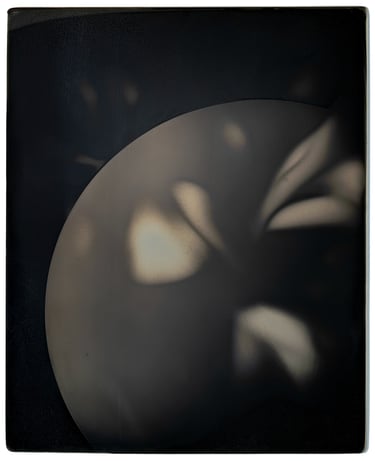
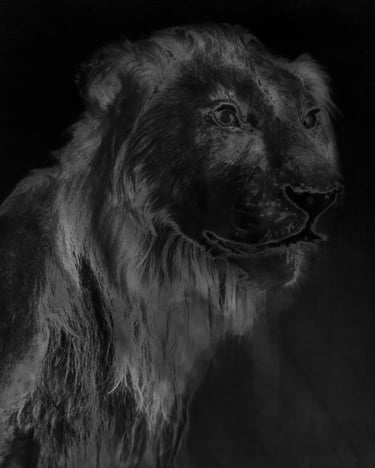
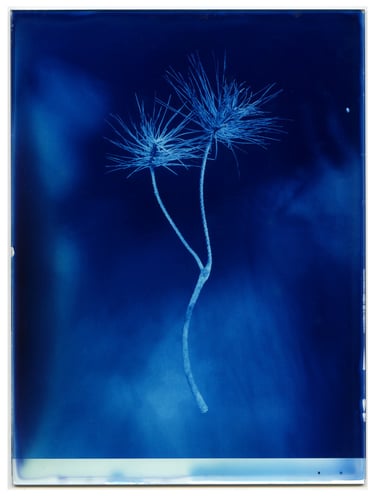
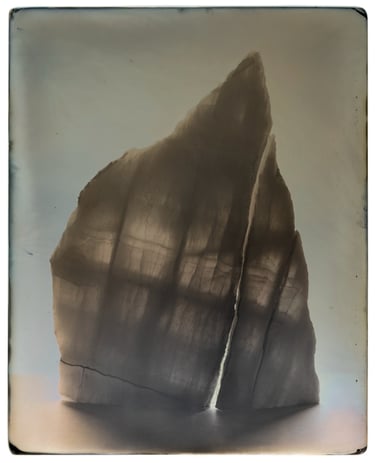
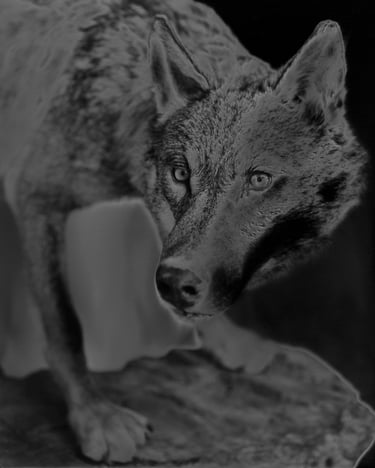
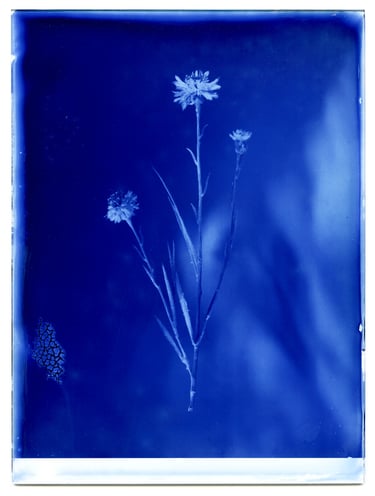
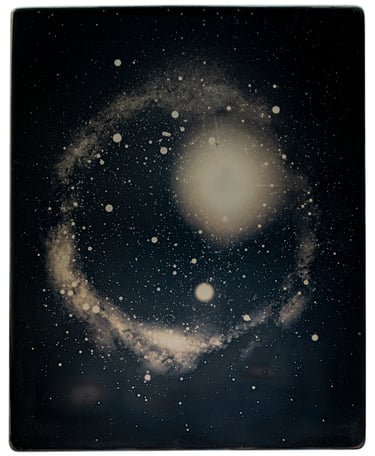
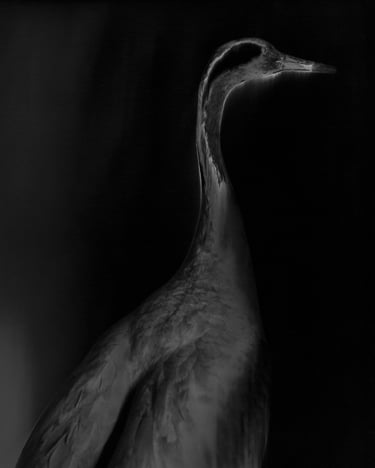
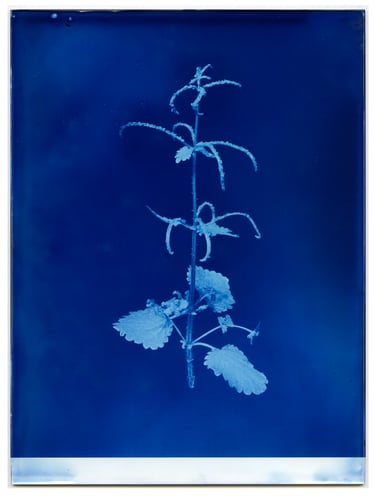
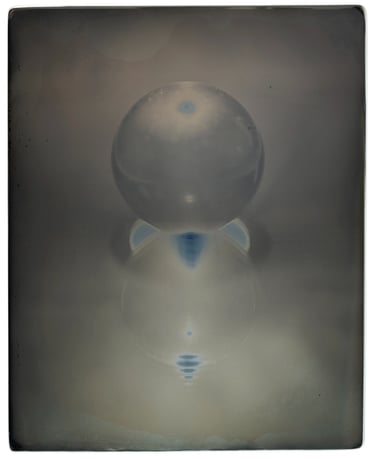
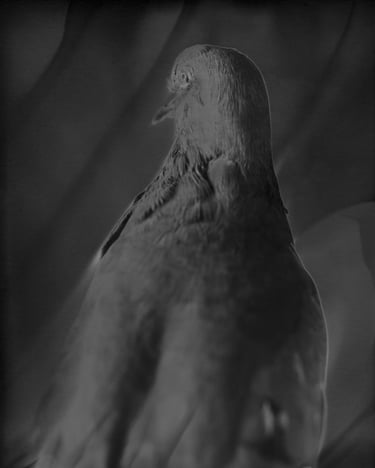
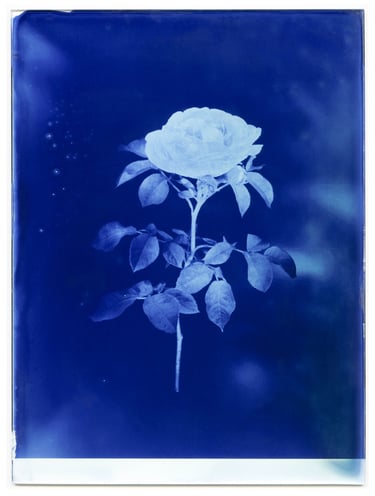
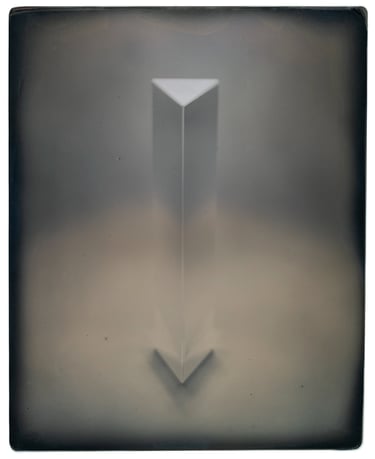
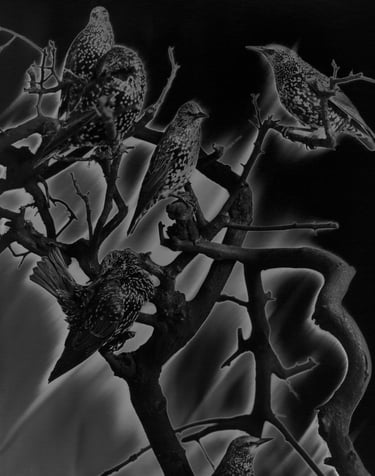
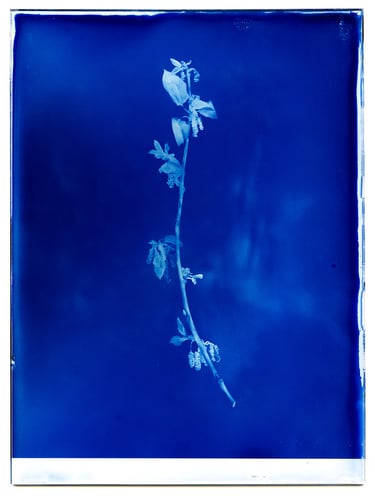
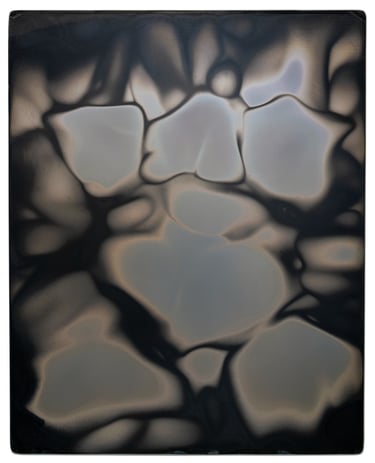
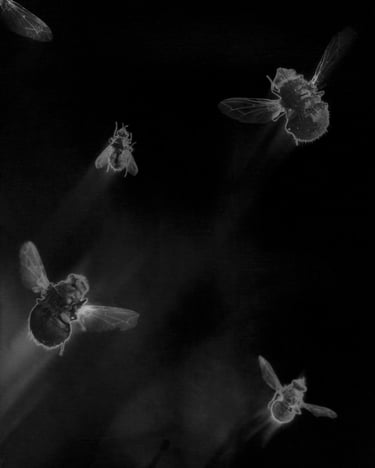
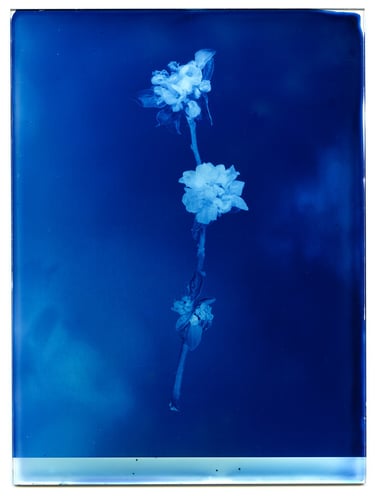
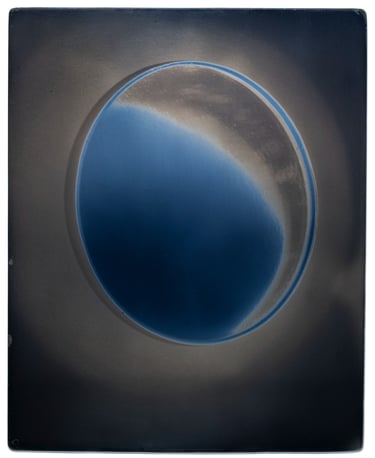
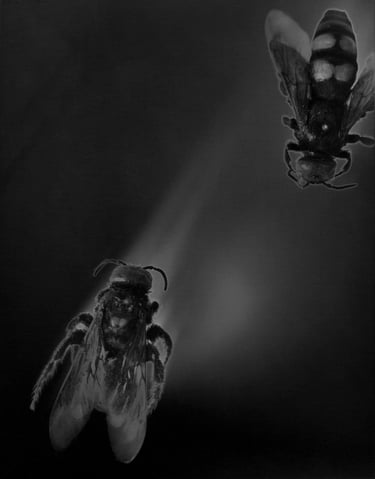
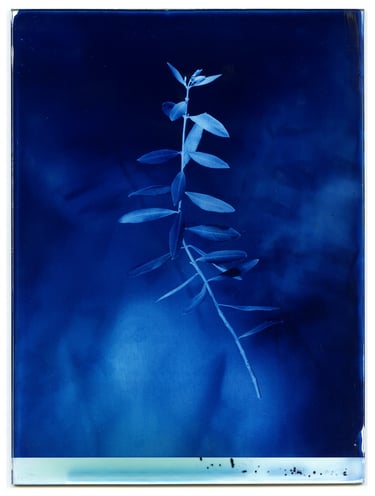
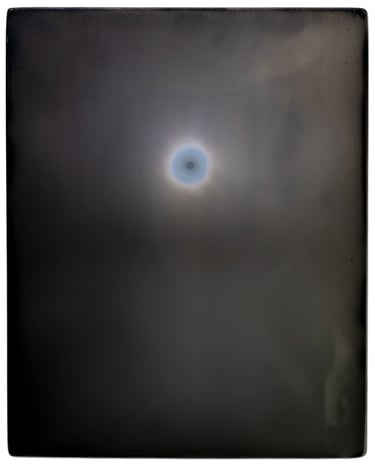
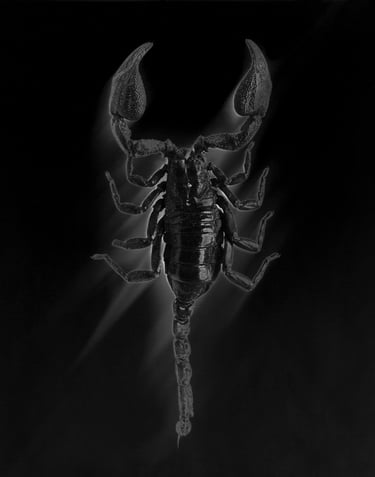
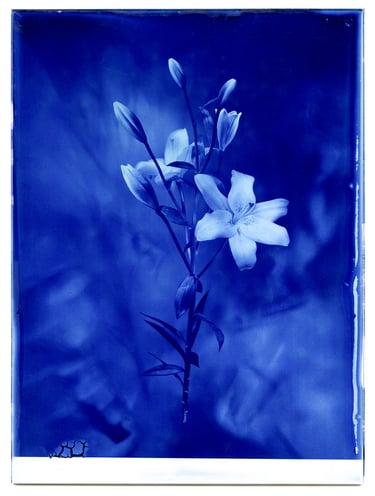
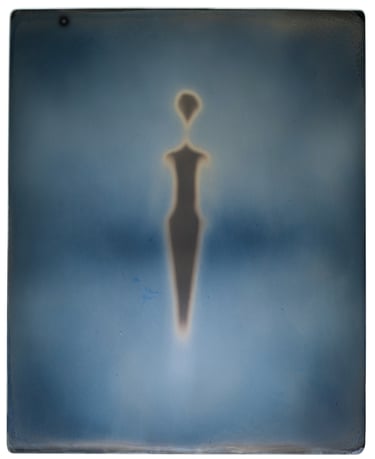



























The Mimetic Observer nasce da un’idea di Peter Lang in occasione dei 700 anni dalla morte di Dante Alighieri, con lo scopo di proporre una ricerca visiva e fotografica sul tema della luce nella Divina Commedia.
Dopo un percorso di letture e suggestioni condivise con la fotografa e stampatrice Carlotta Valente, oltre che con il team dell’Istituto Centrale per il Catalogo e la Documentazione e il contributo del Prof. Giulio Ferroni, ha preso forma una serie originale di 27 fotografie analogiche e uniche che cercano di restituire all’osservatore un percorso visivo obliquo e sorprendente.
Grazie all’utilizzo di diversi materiali e procedimenti fotografici, queste opere indagano l’immaginario dantesco ritraendo la fauna, la flora e l’atmosfera attraverso l’esperienza della luce che Dante descrive accuratamente nel suo viaggio tra Inferno, Purgatorio e Paradiso.
Ogni Cantica viene così presentata secondo una diversa e precisa intensità di luce: nell’Inferno il Poeta trova oscurità e tenebre, nel Purgatorio vede progressivamente la luce e nel Paradiso è avvolto da un immenso chiarore.
Per rappresentare le tre diverse atmosfere luminose sono quindi stati scelti altrettanti materiali fotosensibili: la carta ai sali d’argento, materia opaca che esprime la difficoltà della luce di penetrare nell’Inferno; il vetro trasparente che la lascia filtrare, generando così l’ombra di Dante nel Purgatorio; infine lo specchio che, nel Paradiso, riflette e amplifica un accecante bagliore.
Ciascuno di questi materiali è stato poi utilizzato attraverso diverse tecniche fotografiche:
L’Inferno è rappresentato dalle fotografie di nove animali che Dante descrive nel suo cammino, stampate in camera oscura con la tecnica della pseudosolarizzazione. In questo modo le immagini sono state “bruciate” con una luce che le ha rese molto scure, grigie e prive di toni chiari.
Il Purgatorio è rappresentato da nove piante o fiori che caratterizzano il rigoglioso paesaggio naturale della seconda Cantica che culmina con il giardino dell’Eden. Le immagini sono state realizzate con la tecnica della cianotipia che, con il suo caratteristico colore blu, richiama il primo colore che Dante vede entrando nel Purgatorio. Inoltre il tema dell’erbario è stata storicamente una delle applicazioni più diffuse di questo procedimento fotografico.
Il Paradiso infine è rappresentato da 9 immagini simboliche e astratte che rappresentano le suggestioni luminose raccontate dal Poeta. Le fotografie, con la collaborazione di Joaquin Paredes, sono state realizzate attraverso la tecnica della dagherrotipia su lastre di metallo lucidate a specchio. A causa della loro scarsa sensibilità, sono state esposte con centinaia di lampi luminosi che hanno a volte accecato il supporto rendendolo azzurro in alcuni punti.
Le opere sono entrate a far parte delle collezioni di fotografia contemporanea dell’ICCD e sono state pubblicate in un volume edito da Viaindustriae Publishing, frutto di una lunga ricerca sui materiali e le tecniche di stampa tipografica.
[ENG]
The Mimetic Observer is the brainchild of Peter Lang on the occasion of the 700th anniversary of Dante Alighieri’s death, with the aim of proposing visual and photographic research on the theme of light in the Divine Comedy.
After a process of readings and suggestions shared with the photographer and printer Carlotta Valente, as well as with the team of the Central Institute for Catalogue and Documentation and the contribution of Prof. Giulio Ferroni, an original series of 27 analogue and unique photographs has taken shape, seeking to return the observer to an oblique and surprising visual journey. Using different materials and photographic processes, these works investigate Dante’s imagery by portraying the fauna, flora and atmosphere through the experience of light that Dante accurately describes in his journey through Inferno, Purgatory and Paradise. Each Canticle is thus presented according to a different and precise intensity of light: in Inferno the Poet finds darkness and gloom, in Purgatory he enters progressively into the light, and in Paradise he is enveloped in immense radiance.
Several photosensitive materials were therefore chosen to represent the three different luminous atmospheres: silver salt paper, an opaque material that expresses the difficulty of light penetrating in Inferno; transparent glass that allows light to filter through, thus making Dante’s shadow in Purgatory; finally, the mirror that, in Paradise, reflects and amplifies the sky’s blinding glow. Each of these materials was then used through different photographic techniques:
Inferno is represented by photographs of nine animals that Dante describes on his journey, printed in a darkroom using the pseudosolarisation technique. In this way, the images were ‘burnt’ with a light that made them very dark, gray and devoid of light tones.
Purgatory is represented by nine plants or flowers that characterize the lush natural landscape of the Second Canticle culminating in the Garden of Eden. The images were created using the cyanotype which, with its characteristic blue colour, recalls the first colour Dante sees on entering Purgatory. Moreover, the herbarium theme has historically been one of the most widespread applications of this photographic process.
Finally, Paradise is represented by 9 symbolic and abstract images representing the luminous suggestions narrated by the Poet. The photographs, with the collaboration of Joaquin Paredes, were made using the daguerreotype on mirror-polished metal plates. Due to their low sensitivity, they were exposed to hundreds of flashes of light that sometimes blinded the support, turning it blue in places.
The work became part of the ICCD’s contemporary photography collections and is now out in a volume published by Viaindustriae Publishing, the result of extensive research into typographic printing materials and techniques.
